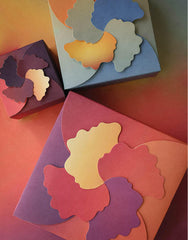
A Natural Connection: Collaborating With Artist Jessie French
Images courtesy of Philip Huynh.
In a world overrun by a pervasive culture of disposability and single-use plastics, most of which end up in landfills and ultimately in our oceans, the need to reimagine our mass-consumption habits is critical. Driven by the desire to build a petrochemical-free future, artist Jessie French confronts the status quo and pushes boundaries with bioplastic alternatives.
Navigating the convergence of art and ecology, Jessie explores closed-loop material solutions and has pioneered a new algae-based polymer – at once renewable, regenerative and sustainable – with the potential to revolutionise plastic consumption as we know it. Her experimental studio, Other Matter, provides real-world sustainable solutions developed from her artistic practice and expands accessibility to these material innovations.
To celebrate the opening of Sarah & Sebastian’s new Melbourne Flagship store, we collaborated with French to create bespoke pieces for the space. Inspired by the undulating patterns and cerulean hues found in ocean environments, her artworks offer a compelling commentary on the necessity to shift away from plastics mined from finite fossil fuels and ancient algae and focus instead on renewable resources made from new algae.
We caught up with the artist in her Melbourne-based studio to discuss her influences, material development, and the possibilities of a post-petrochemical world, including a patent-pending sustainable decal innovation.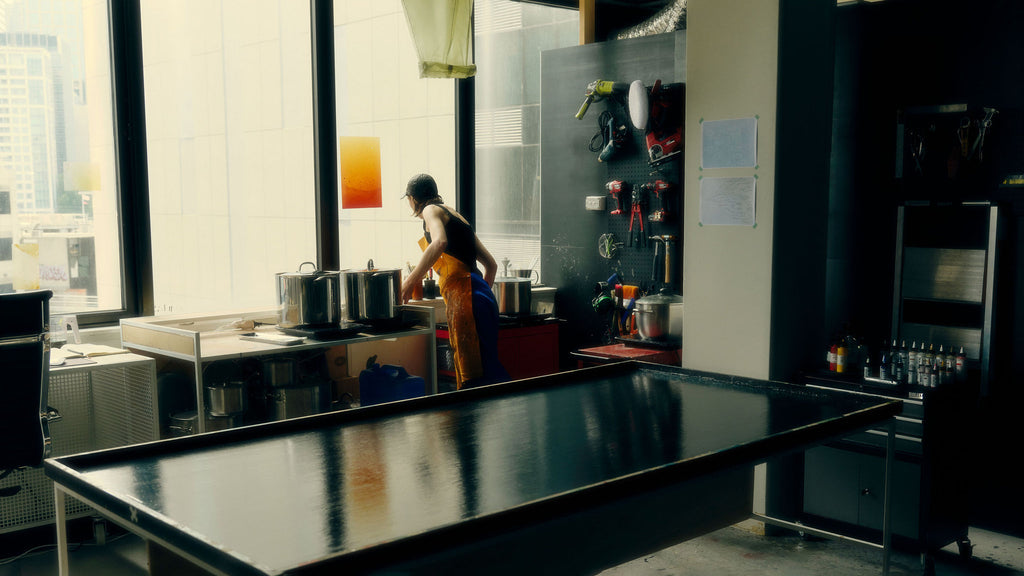
SARAH & SEBASTIAN: Tell us about the inspiration behind your practice and how material exploration informs your work – what pushed you to pursue bioplastics?
JESSIE FRENCH: 460 million tonnes of petrochemical plastic waste was produced in 2019 alone. Only 9% is ultimately recycled and the remainder is incinerated, disposed of in landfills or washed into waterways, eventually ending up in our oceans.
Microplastics are found in every corner of the Earth, from the deepest parts of the ocean – the Mariana Trench – to the tops of the most inaccessible mountains. More than half of the ingredients in petrochemical plastic are hazardous and can be found accumulated in our blood, breastmilk and rainwater
Recycling petrochemical plastics is problematic due to the intense energy required to do so, and because it is often shipped across the world to countries where labour is cheapest. Heather Davis’ book, Plastic Matter, thoroughly critiques the inadequacies of recycling as a solution, and Max Liboiron has written extensively about issues related to pollution in Pollution is Colonialism.
The inspiration behind my practice stems from engagement with research like this, and a resulting drive to imagine what a future could look like without petrochemical plastics and the environmental and health ramifications tied to them.
“The inspiration behind my practice stems from a drive to imagine what a future could look like without petrochemical plastics and the environmental and health ramifications tied to them.”
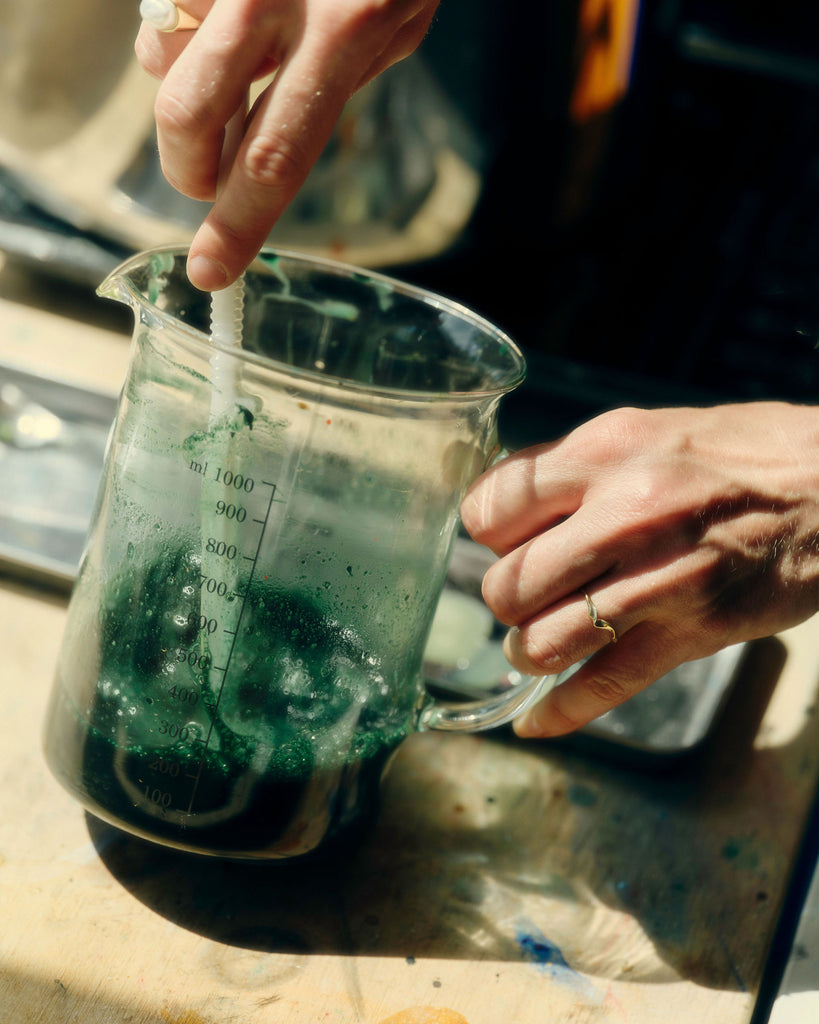
Jessie wears the Fine Kelp Ring and the Venus Pearl Signet from Sarah & Sebastian's OBSCURA collection.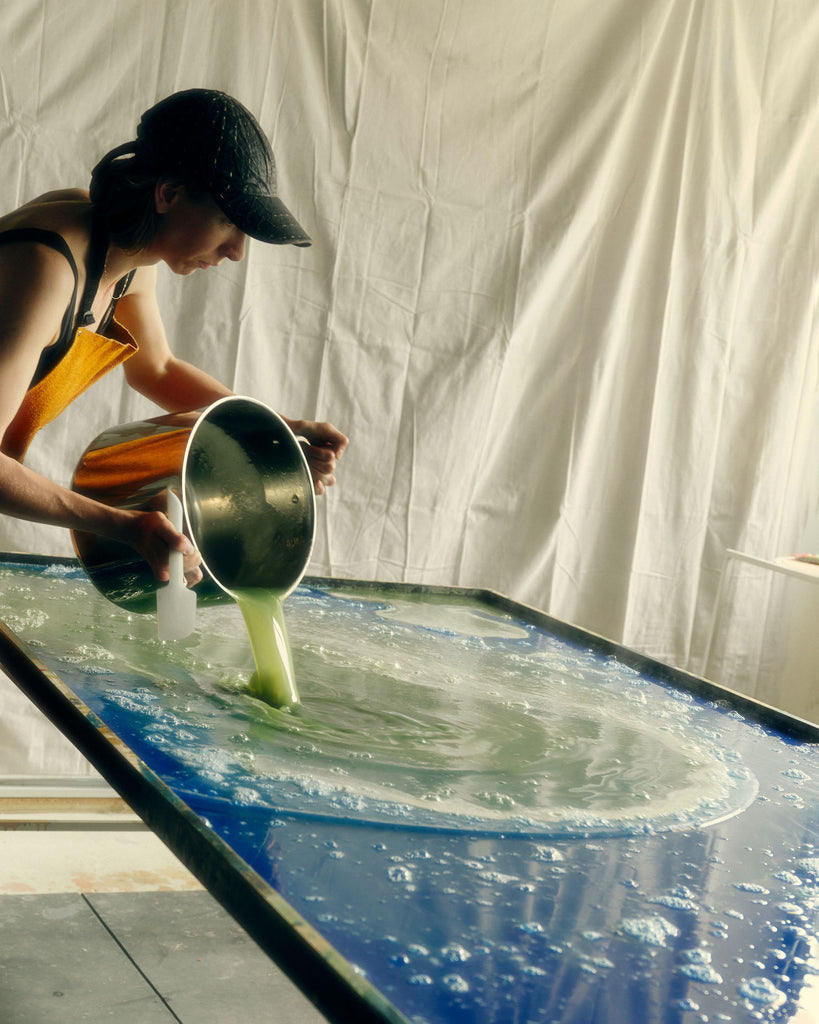
SARAH & SEBASTIAN: How would you describe algae-based bioplastics? Can you share a bit about the research and development that goes into creating this material?
JF: Firstly, it’s important to acknowledge that the term ‘plastic’ is most commonly understood to mean non-renewable petrochemical plastic, thanks to the prevalence of this type of material in everyday society. In reality, however, plastic refers to any material that can be moulded.
The material I make is just another type of plastic, however, instead of using a polymer based on petroleum oil, it is made using polymers from new algae. Algae is a broad term that includes microalga and it’s another word for seaweed, which is a macroalga.
The process for extracting this polymer is much like making a stock. The algae is cleaned, separating sand and salt, and then essentially boiled. The solid algae is removed and the resulting ‘stock’ is cooked down. I use the remnants from this process as the base for my plastic. It goes through another cooking process when I create the work: back into a pot with water. Pigments are then added, which are occasionally also algae-based, and then my work is made by pouring out the liquid mix, which sets and then cures to form unique artwork.
Research and development is a big part of my practice since this is a modern material with little existing knowledge or data surrounding its production, conservation or recycling systems. I work closely with conservators and researchers in these areas to test the physical and mechanical properties of the material, to determine how it can be best used and if it could be useful in a particular formulation. This informs my development of methods and applications.
“R&D is a big part of my practice since this is a modern material with little existing knowledge or data surrounding its production, conservation or recycling systems. I work closely with conservators and researchers in these areas to test the physical and mechanical properties of the material.”

SARAH & SEBASTIAN: Ocean conservation is a driving force for everything we do at SARAH & SEBASTIAN – can you share a bit about harvesting new algae as a renewable resource for bioplastics versus ancient algae, especially in relation to our oceans?
JF: The majority of plastic waste comes from single-use packaging and if this is mismanaged, it eventually ends up in oceans where it poses a threat to marine life. Petroleum oil, which is used to make most plastics, is formed from ancient algae that have been compressed under high heat and pressure over millions of years and then extracted from the earth as fossil fuels.
As I began to research more about these material origins, it struck me as odd that we treat some fossils with reverence and respect, while others are processed into disposable items without much consideration. This led me to explore plastics made from algae that hadn’t been through this intense aging process, which didn’t need to be so harmfully extracted and that could be sourced sustainably – a process where the algae have time to regrow before any harvesting takes place.
Vitally, this kind of plastic can be remade into new items as part of a completely circular process. Its source is renewable and can grow back to replenish itself, while the harvesting process can be managed sustainably. Additionally, the supply chain research I have conducted in Morocco, where the majority of this polymer comes from, is a robust process of sustainable harvesting brought into place in 2014, as a collaboration between the processing factory, the government and a collection of independent marine experts to prevent over-harvesting of the seaweeds.
”This led me to explore plastics made from algae that hadn’t been through this intense aging process, which didn’t need to be so harmfully extracted and that could be sourced sustainably – a process where the algae have time to regrow before any harvesting takes place.”
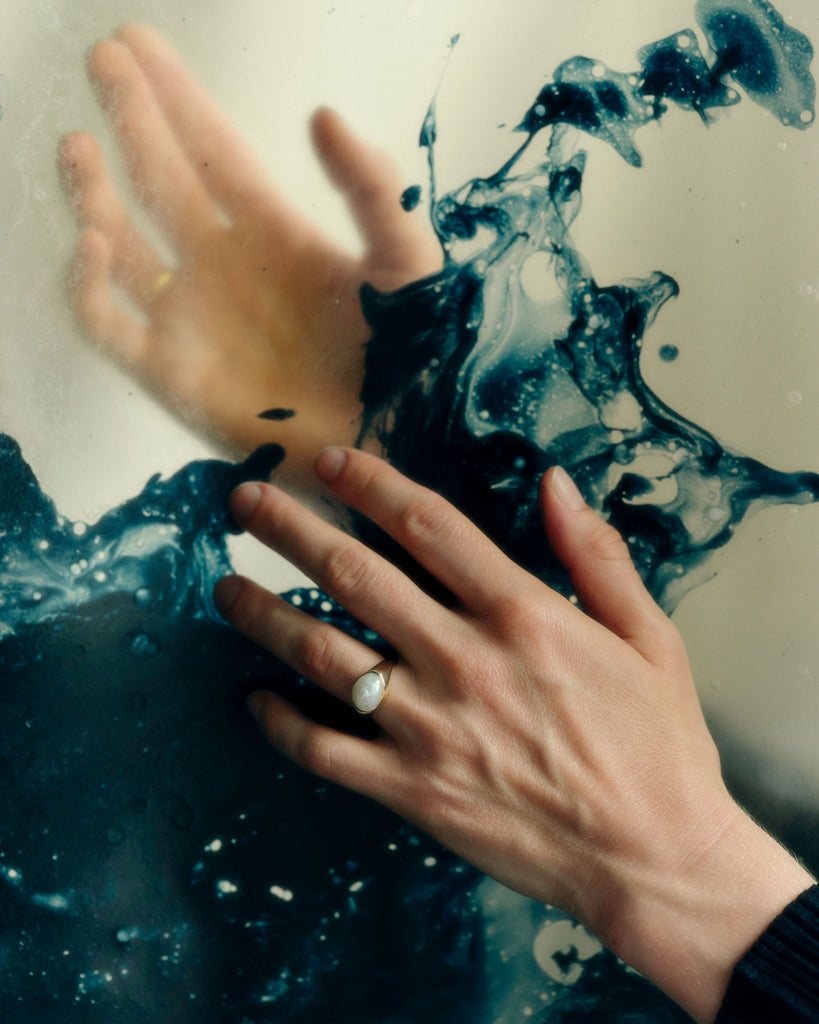
Jessie wears the Venus Pearl Signet ring from Sarah & Sebastian's OBSCURA collection. SARAH & SEBASTIAN: What was the inspiration and process behind the unique pieces you created for the opening of our new Melbourne Flagship store?
SARAH & SEBASTIAN: What was the inspiration and process behind the unique pieces you created for the opening of our new Melbourne Flagship store?
JF: The works I have made for Sarah & Sebastian replicate patterns and colours that appear in ocean environments. Looking at them gives a sense of viewing the ocean from below the surface, but there are also some deeper hidden meanings.
The works are coloured using some of the same microalgae whose fossilised remains are transformed over millions of years into petrochemical oil; an organism that has existed on the planet unchanged for more than 3 billion years. The figure in one of the panels represents these ancient ancestors of life and the rebirth of algae as material in a new form – a reminder to look beyond our recent history at how life has existed sustainably pre-historically, and the importance of redirecting our course before it’s too late.
SARAH & SEBASTIAN: How do you think we can harness algae-based bioplastics to better our planet’s future? Is this something that could be applied commercially and on a mass scale?
JF: We don’t pay the proper price for the mass-produced plastics currently in use today. Governments across the world are beginning to work on ways to fix the overwhelming issues resulting from this unsustainable material; for example, bans on single-use plastics are one solution we are beginning to see in practice.
Alternative materials, which consider the whole life cycle of a material and provide ways to effectively reuse or recycle, are going to be key in the future. Remembering that petrochemical plastics represent thousands of materials as a broad category, there will likely be a similar number of alternatives required to reduce their use.
Through Other Matter, I have been deeply immersed in a project close to my heart for the past few years: developing an innovative alternative to traditional PVC decals. Through my research, I discovered how toxic PVC was – there are increased cancer rates in the areas in which it is produced, and chloride and formaldehyde are both off-gases, which are carcinogenic and degrading to artworks and objects. This is one of the reasons why PVC decals are not permitted around collection items in institutions. On top of that, it can’t be recycled and once disposed of, it can break apart into toxic monomers that wash into soils and water.
This material is often used to introduce an artist’s work in the form of wall or glass decals in galleries and museums. I couldn’t keep using these for my exhibitions, so I developed an alternative. It’s a world-first, patent-pending innovation, which I’m beginning to roll out in a program of industry trials with innovative partners keen to support its development. I’m thrilled to see this material side of my work take a different shape. This work is a journey and has taken hold in a wider applied form. Not the noun, but the verb: it’s working.
"Through Other Matter, I have been deeply immersed in a project close to my heart: developing an innovative alternative to traditional PVC decals. It’s a world-first, patent-pending innovation, which I’m beginning to roll out in a program of industry trials."
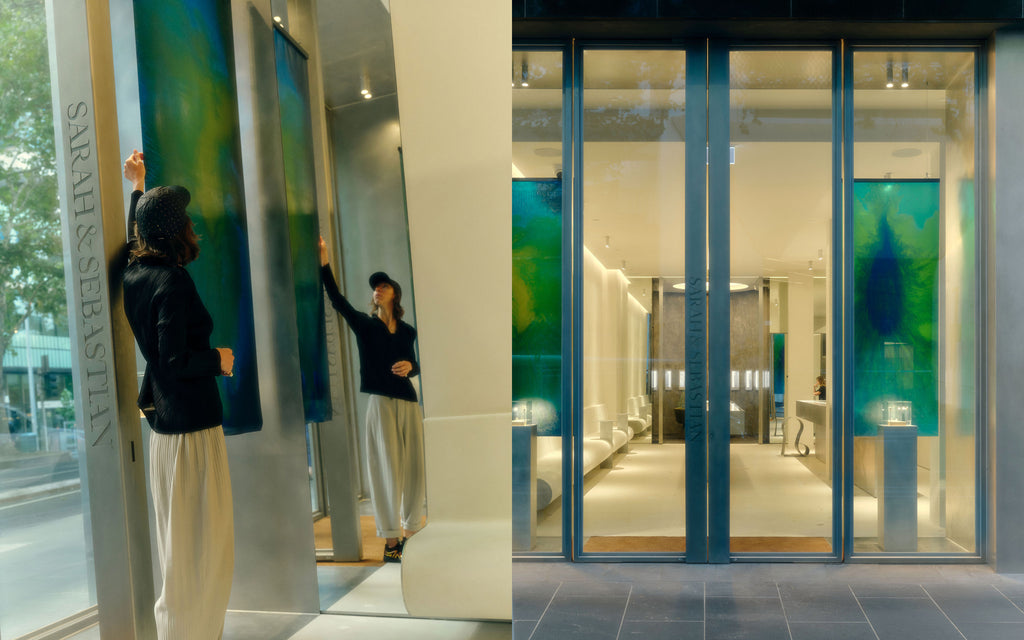 Jessie's artwork installation at Sarah & Sebastian's Melbourne City Flagship Store.
Jessie's artwork installation at Sarah & Sebastian's Melbourne City Flagship Store.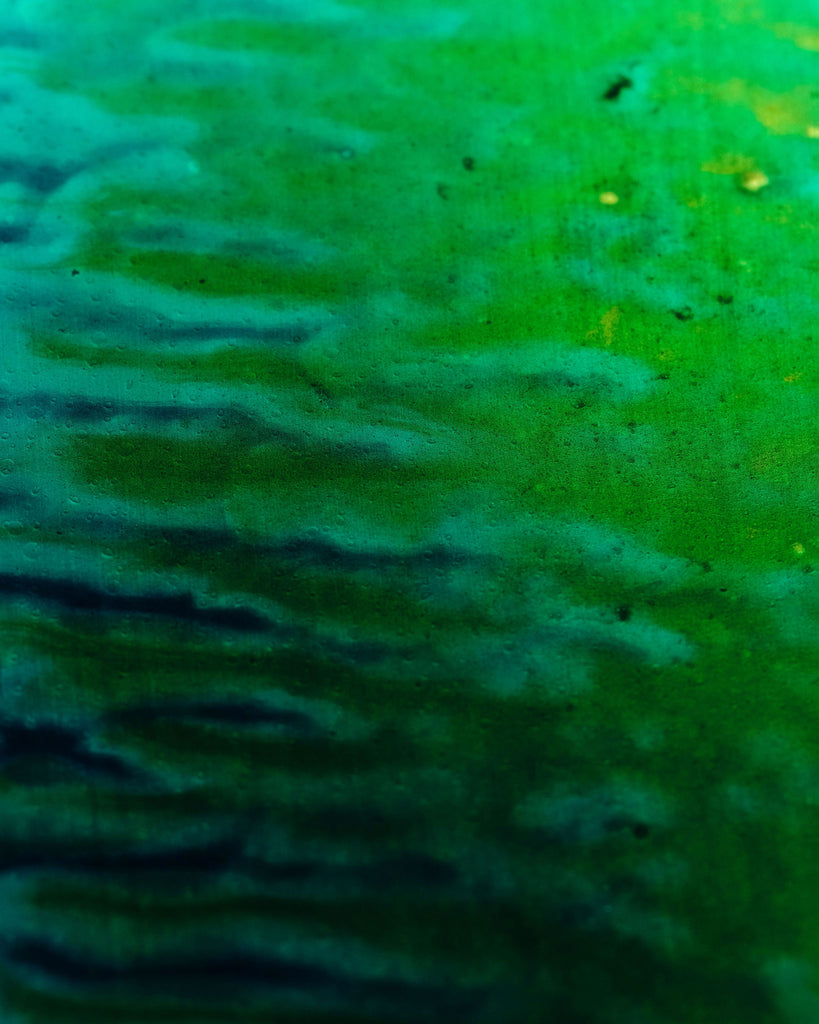
RELATED STORIES
Now You See Me, The Reef – A Short Film
Introducing Sarah & Sebastian's Melbourne Flagship Store
10 Year of Sarah & Sebastian, In Conversation With Co-founders Sarah & Robert








































